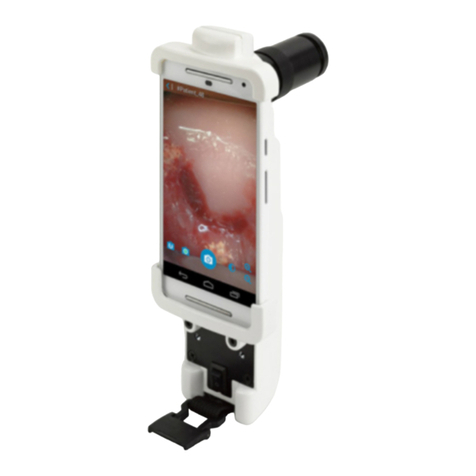EVA System: User Guide
2
T ABLE OF CONTENTS
Welcome to the EVA (Enhanced Visual Assessment) System ..................... 3
Get to know the EVA System ...................................................................... 4
Assemble the hardware .................................................................................... 6
How to capture clinically-useful image? ................................................... 10
Stability ........................................................................................................ 10
Positioning ................................................................................................... 11
Light ............................................................................................................. 12
Focus ............................................................................................................ 13
Care and Maintenance .............................................................................. 14
Charging ........................................................................................................... 15
Device Troubleshooting ................................................................................... 16
Lens Troubleshooting ...................................................................................... 17
Replacement Wear Parts and Technical Service ............................................. 18
Technical Product Overview ...................................................................... 19
Illumination ..................................................................................................... 19
Specifications ................................................................................................... 20
Appropriate Use .............................................................................................. 21
Indications for Use ........................................................................................... 21
Contraindications ............................................................................................ 21
Risks and Benefits ............................................................................................ 21
Important Notes on Safety .............................................................................. 21
List of Warnings ............................................................................................... 21
Symbols and Markings ..................................................................................... 22
All specifications for the product are subject to change without notice.
Contents of the User Guide and other written materials provided to the
health service provider with the product may not be reproduced by any
means whatsoever without prior written permission from MobileODT.
All products mentioned in this User Guide and related written materials
are trademarked or copyrighted by their manufacturers.




























